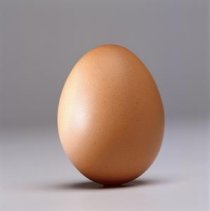Molting in laying hens and Salmonella
The impact of molting practices in laying hens on shedding and prevalence of Salmonella has been investigated in the following study.

Impact of Laying Hen Cycle and Molting on the Prevalence and Populations of Salmonella
(Brian W. Sheldon – Department of Poultry Science, North Carolina State University, Raleigh, NC, USA)
The study is summarised below.
It is common practice in laying hens to induce molting by withdrawing feed. The general purpose of induced molting of commercial layers is to rejuvenate the hen’s reproduction system so that better egg shell quality and higher egg production can be achieved and extended over several laying cycles. An induced molt has historically been accomplished by fasting or complete withdrawal of feed from the flock for a specified time period or by limiting energy and critical nutrient dietary inputs.
It has been noted that feed withdrawal from hens, while effective in inducing a molt and allowing an adequate reproductive rest period for the hen, may cause deleterious effects on the animal such as greater intestinal colonization by Salmonella enterica subspecies enterica serovar Enteritidis (SE), one of the leading causes of salmonellosis in humans.
The discovery that the immune system of molted hens was compromised prompted investigations into the effect of the practice on infection by Salmonella. Indeed, hens experimentally challenged with an exogenous source of SE concomitantly during molt induction exhibited a much more severe infection as compared to unmolted hens. The rates of intestinal shedding seen in molted birds were reportedly higher (Holt and Porter, 1992). Moreover, the molted hens also shed higher populations of SE over that of the control hens (Holt, 1992; Holt, 1993; Holt et al., 1994). Molted hens, unlike their control counterparts who are generally asymptomatic towards the presence of Salmonella, exhibited inflamed intestines, primarily in the colon and cecum (Holt and Porter, 1992). Feed withdrawal to induce a molt can also lead to the recurrence of a previous SE infection with significantly higher rates of shedding and larger populations (Holt and Porter, 1993). In their study, Holt and Porter found that experimentally-SE infected molted hens transmitted the organism horizontally to 85- 100% (in contrast to 10-30% of the unmolted birds) of previously uninfected, but contact-exposed, hens (i.e., control birds located in adjacent cages) after 10 days following the initial SE challenge of the hens.
The discovery that molting through a withdrawal program exacerbates an SE infection in hens has prompted research into methods to ameliorate the situation through such measures as altering methods for inducing the molt or through other intervention strategies.
